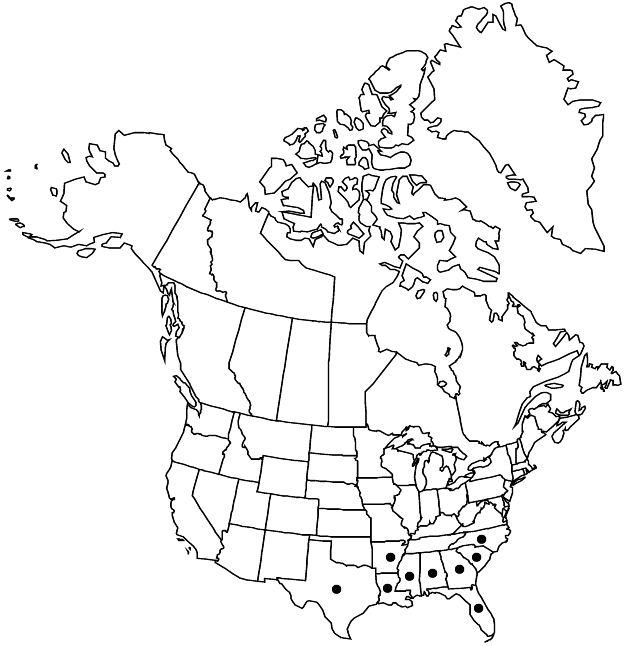Difference between revisions of "Crocanthemum carolinianum"
Ann. Sci. Nat., Bot., sér. 2, 6: 370. 1836.
FNA>Volume Importer |
imported>Volume Importer |
||
| Line 61: | Line 61: | ||
|publication year=1836 | |publication year=1836 | ||
|special status=Endemic | |special status=Endemic | ||
| − | |source xml=https:// | + | |source xml=https://bibilujan@bitbucket.org/aafc-mbb/fna-data-curation.git/src/bb6b7e3a7de7d3b7888a1ad48c7fd8f5c722d8d6/coarse_grained_fna_xml/V6/V6_762.xml |
|genus=Crocanthemum | |genus=Crocanthemum | ||
|species=Crocanthemum carolinianum | |species=Crocanthemum carolinianum | ||
Revision as of 23:43, 27 May 2020
Herbs. Stems erect, (4–)10–30(–38) cm, stellate-pubescent, hairs 1.5–2.5 mm. Leaves basal, rosette- or mat-forming, and cauline, relatively few, similar to basal, margins not revolute; petiole 1–4 mm; blade spatulate to obovate or elliptic, 10–35(–60) × 5–18(–28) mm, tapered to base, apex obtuse, surfaces sparsely stellate-pubescent, lateral veins raised abaxially. Inflorescences terminal, scorpioid cymes; chasmogamous flowers 1–3 per cyme, cleistogamous rarely produced, flowering 1–3 months later than chasmogamous. Pedicels 4–15(–24) mm; bracts 2.5–6 × 0.5–1 mm. Chasmogamous flowers: outer sepals lanceolate, 3–6(–7.5) × 0.6–1.2 mm, inner sepals ovate, 7–12 × 4–6 mm, apex acuminate; petals broadly spatulate, 8–18 × 8–15 mm; capsules 6–9 × 4.5–9 mm, glabrous. Cleistogamous flowers: outer sepals linear, 1.6–2.8 × 0.4 mm, inner sepals ovate, 3–4.5 × 1.6 mm, apex acute; capsules not seen.
Phenology: Flowering Mar–May.
Habitat: Dry to mesic pine savannas and flatwoods, sandy pine-oak woodlands, stable alluvial dunes
Elevation: 0–200 m
Distribution

Ala., Ark., Fla., Ga., La., Miss., N.C., S.C., Tex.
Discussion
Crocanthemum carolinianum is one of the more distinctive members of Crocanthemum because of its short stature, basal rosettes, relatively large leaves, nonrevolute leaf margins, and long-stellate hairs on stems. Unlike other eastern species, it rarely produces cleistogamous flowers (less than 1% of specimens examined, according to H. S. Daoud and R. L. Wilbur 1965, all in Florida).
Selected References
None.